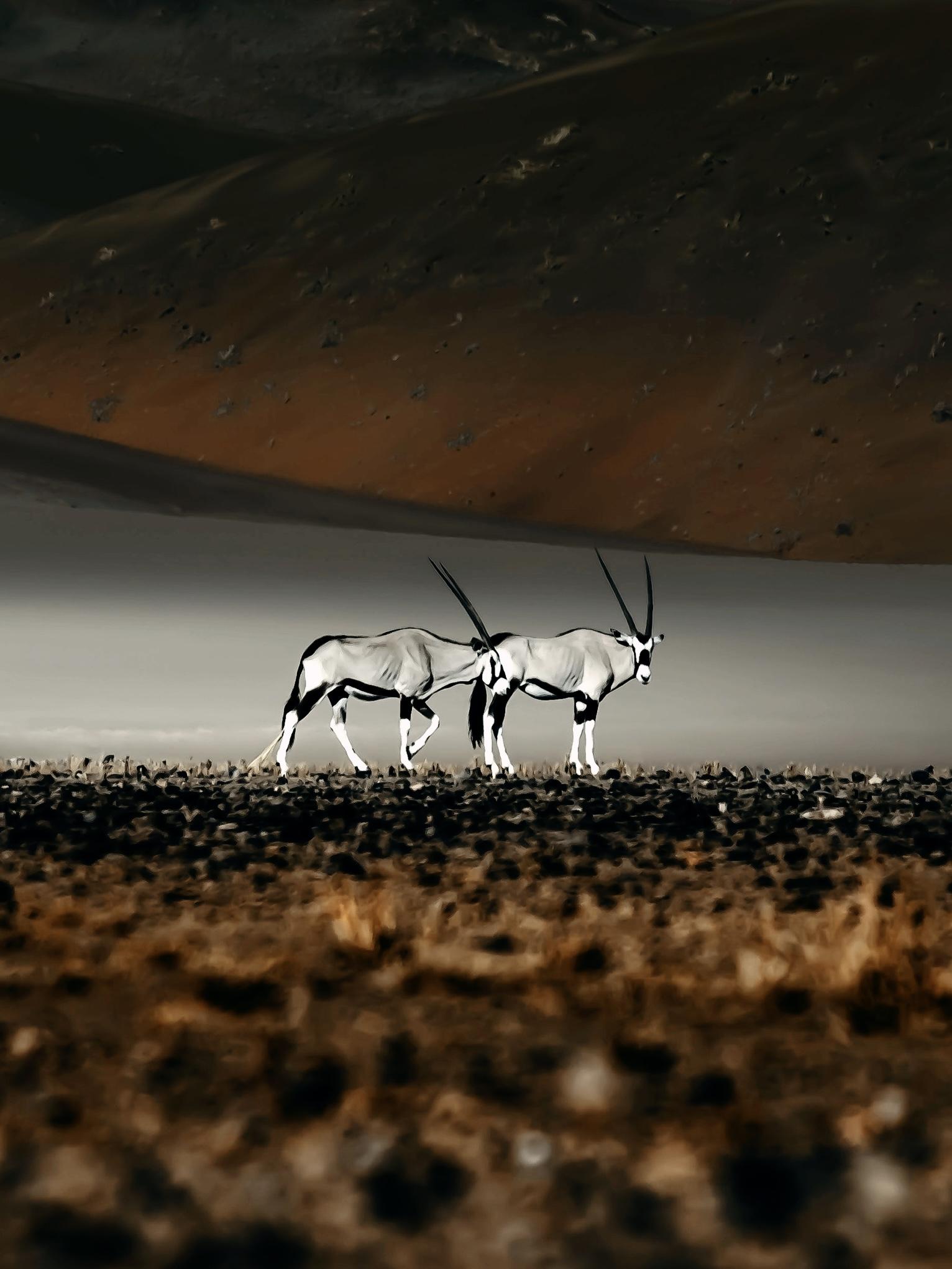X-Photographer – Johann van der Walt – Tswaing Meteorite Crater
Tswaing is an impact meteorite crater in South Africa situated just over 35 kilometres north-west of Pretoria. It is estimated that it was fromed when a meteorite slammed into the earth’s crust about 220 000 years ago. It was a stony type meteorite between 30 and 50 meters in diameter. The impact formed a huge crater, 1.4 km in diameter and 200 m deep. This crater is one of the best-preserved meteorite impact craters in the world.
The name Tswaing means Place of Salt in Setswana, and refers to the saline lake that covers the crater floor. Its English name is Saltpan. From 1912 to 1950 an industry producing soda ash and salt was based at the crater.
The crater is inside the Tswaing Meteorite Crater Reserve in the Soshanguve district and is surrounded with indigenous Bushveld like vegetation.
According to Wikipedia it is on the tentative list for consideration as a UNESCO World Heritage Site, but I could not find any reference of this on the official UNESCO web site.
My good friend Jerry Fowlds and I decided to go camping at the crater in order to create a star trail photo with the crater as the foreground. The long weekend of 1 May was the ideal weekend as the moon (last quarter) would only rise at 1:30am on the Saturday night. There was a weather prediction of a cold front moving in on the Sunday though.
We setup camp at the camp/picnic site in the reserve and just before 8pm, after a typical South African braai, we went to the crater (about 2km from our camp site) and setup our cameras for the star trail.
My initial plan was to do a 1 hour long exposure, but on our way to the reserve that morning we realised that the area around the reserve (in fact, all the way from Pretoria up to the reserve) is nowadays a very densely populated area with typical African low income housing which goes hand in hand with huge and very bright neighbourhood floodlights. With such light pollution a 1 hour long exposure was out of the question!
My normal fall-back plan is to take a series of shorter photos and then to stich them together afterwards with software. So when we arrived at the crater floor, I took a series of photos to determine the best exposure combination. Like always, I prefer to use an F8 on an ultra-wide angle lens which will ensure that everything from the foreground to infinity (the stars) will be in focus. My first 5 minute exposure was totally over exposed and the next 3 minute exposure was still too bright. I then settled for 2 minute exposures and set up my external remote control to take 32 2 minute exposures. Jerry did not have this luxury – he forgot to bring his remote cable release. We had to improvise by using a tyre valve cap and isolation tape to keep the shutter button down. He was therefore limited to 30 second exposures (an old trick that we have used several times in the past is to put the camera on continuous shooting mode, use a 30 second exposure time and then to tape down the shutter button – the camera will continue to take these 30 second exposures one after the other until you release the tape from the shutter button).
Using 2 minute exposures in this amber coloured ambient light I managed to get a very unusual looking star trail.
At exactly 21:28 a very strong wind came up and blew my camera and tripod over. The camera fell on the gravel next to the water (about 30cm from the water!). Luckily the Fujifilm X-T1 is a very robust camera. The impact chipped away the right hand top corner of the camera body as well as the exposure compensation dial. The back LCD screen got a number of very deep scratches but no cracks. The battery door as well as the memory card door opened from the impact, but did not break off. I refitted the battery and with a pounding heart turned it on. And it was still working! I managed to take 25 2 minute exposures before this unfortunate incident. I then setup my camera again, this time on a lowered and stretched tripod and started a new star trail with a different composition.
At 22:40 Jerry’s camera stopped photographing and we went closer to investigate. I forgot about my tripod’s stretched legs and bumped it. This was 46 minutes into the second star trail. It was obviously not meant for me to have a 1 hour exposure that night. We decided to pack up and go back to the camp site.
The cold front did move in on Sunday and by nightfall the stars were covered by clouds. At least the camp fire (and red wine) kept us warm!
By Monday morning all the clouds dissipated but we still decided to go on an early morning hike before having an improvised breakfast. I took a few infrared photos using my infrared converted Fujifilm X-E1 with a custom white balance to “fit-in” with the amber star trails.
Note: For more on how to photograph star trails download my 7 page e-book called “Star Trail Photography Guide” from my website (http://johann.vdwalt.net). It contains information on how to photograph star trails in the northern as well as the southern hemispheres. It covers both the “ultra-long exposure” and the “series of shorter exposures” techniques.





